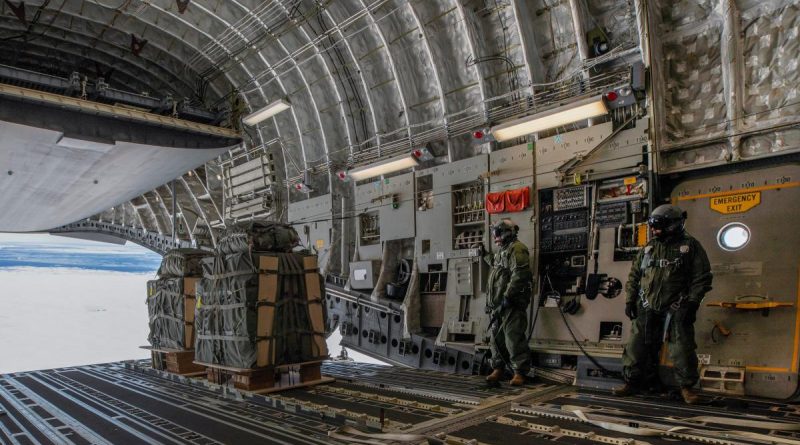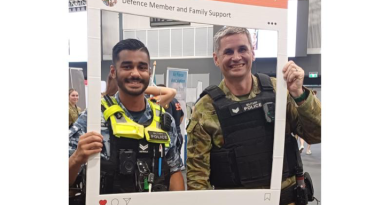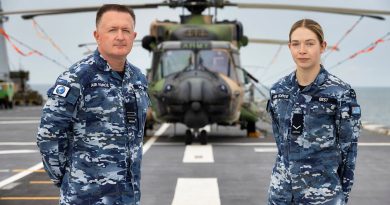Great Southern supply airdrop

Eagerly awaiting personnel at Casey Station, Antarctica, got excited when they saw two containers falling from a C-17A Globemaster III on October 14.
CAPTION: 36 Squadron loadmasters Corporal Shaun Harding, left, and Flight Sergeant Rick Haslewood launch essential supplies from a C-17A Globemaster over Casey Station, Antarctica. Story by Flight Lieutenant Suellen Heath. Photo by Corporal Kylie Gibson.
The airdrop was part of Operation Southern Discovery, an Australian Defence Force contribution to the whole-of-government Australian Antarctic Program.
36 Squadron loadmaster Flight Sergeant Rick Haslewood, who watched the containers containing essential equipment and supplies land safely in the airdrop zone, said the cargo weighed more than 3000 pounds.

CAPTION: Essential supplies for the Australian Antarctic Program are dropped from a C-17A Globemaster aircraft for Casey Station, Antarctica during Operation Southern Discovery. Photo by Flight Lieutenant David Jacks.
“Operation Southern Discovery occurs annually, usually during the Austral Summer period, which is November to March,” Flight Sergeant Haslewood said.
“We regularly support the Australian Antarctic Division by delivering large-scale, heavy scientific and operational equipment that is oversized and/or time critical, including providing emergency support to the Australian Antarctic Program.
“Regularly providing this support across their three Antarctica stations continually tests our capability to ensure we can operate in extreme locations and conditions.”
CAPTION: Flight Sergeant Rick Haslewood, No 36 Squadron Loadmaster, sits at the C-17A Globemaster forward Loadmaster station. Photo by Corporal Kylie Gibson.
Based in Hobart, the Australian Antarctic Division leads the Australian Antarctic Program, which includes three large permanent scientific research stations in Antarctica and one on Macquarie Island in the sub-antarctic.
Australian Antarctic Division General Manager Antarctic Operations Charlton Clark said the success of the airdrop mission was essential to ensure the Wilkins Aerodrome could open, to commence the summer flying program.
“The opening of Wilkins Aerodrome is crucial to our summer season in Antarctica and a vital link to connect our people and high-priority cargo to the continent,” Mr Clark said.
“The airdrop mission delivered vital parts to repair unserviceable runway snow-clearing machines needed to open the runway.”
The Australian Antarctic Program team at Casey station, 70km from the runway, has been in Antarctica for a year.
Mr Clark said once the runway was up and running, they would conduct a series of flights to take in new expeditioners and hand over the station to the new team for the year ahead.
“The team at Casey Station were very excited for the airdrop. It was the first contact in several months and we are one step closer to them returning home,” Mr Clark said.
“On the other hand, there is an excited new team ready to begin their year, where they will begin preparing to launch two deep-field science missions into remote parts of the frozen continent to help us understand the Earth’s past and present climate.”
CAPTION: Mr Charlton Clark, General Manager Australian Antarctic Division (R) chats with No. 36 Squadron C-17A Globemaster pilots Flight Lieutenants David Jacks and Dirk Taylor (C). Photo by Corporal Kylie Gibson.
.
.

.
.






Are RAAFIES allowed to grow beards now?